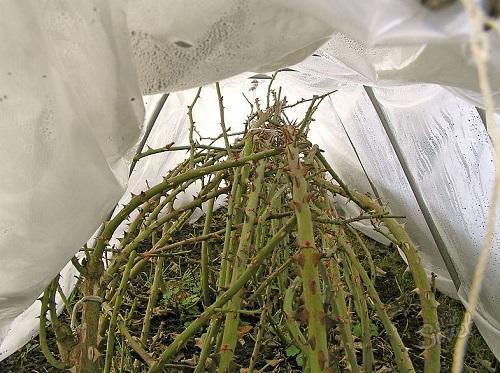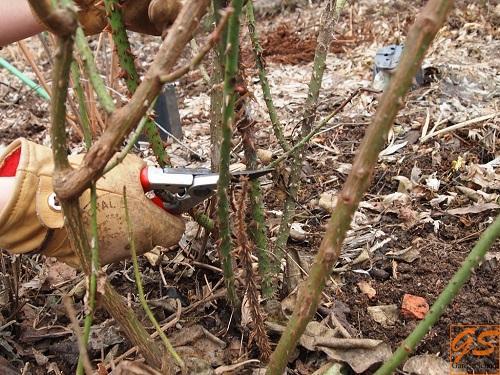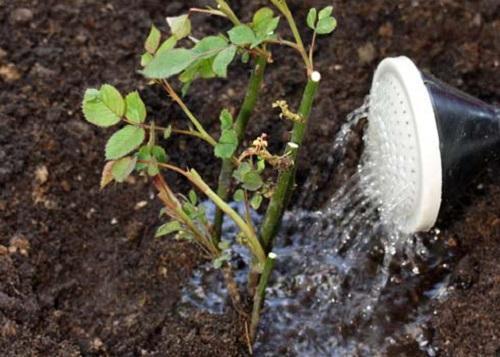How to care for roses in spring after winter?
Every florist who has even a small rose garden in his household knows the main rule of growing roses. A beautiful flowering bush can only be obtained by creating comfortable living conditions for roses. And, above all, you need to know how to properly care for roses in the spring after winter in order to help the bushes wake up and enter the phase of active growth.
Among the spring works in the rose garden, there are four main points:
- removal of the winter shelter;
- pruning a bush;
- top dressing;
- mulching.
Removing the winter shelter from the bushes

The winter shelter is removed from the bushes after the night frosts have gone, and the daytime air temperature reaches stable values.
If the shelter is made of a waterproof material that does not allow light to pass through, you should first open the bush slightly so that it airs out, and the moisture accumulated under the shelter evaporates. Fully open roses in a few days when they acclimate to the outside temperature.
In the case of breathable material, the cover can be removed immediately.
Spring pruning of roses

Pruning of bushes in early spring is carried out for sanitary purposes, removing the shoots frozen over the winter. Moreover, it allows the formation of a rose.
Depending on the type of roses grown, there are certain nuances when pruning bushes:
- Hybrid tea roses. After removing dry branches, no more than 8 shoots are left on adult bushes, shortening them after 6 buds. It is enough for young seedlings to leave 3 shortly trimmed branches (after 3 buds).
- Shrub roses. Varieties that bloom once are not pruned (only dry shoots are removed). Roses that bloom several times are pruned one third of their height.
- Stamp roses. No more than 5 buds are left on the shoots, cutting them off at about the same height.
- Climbing roses. Just like shrub roses, young climbing bushes that bloom once are not pruned, otherwise flowering will not come the next season. It is enough just to thin them out by cutting out dry shoots. In varieties that bloom many times, the lateral branches are shortened to 2-3 buds, leaving the main branches intact.
Spring feeding of roses

Young shrubs, planted in autumn, do not yet need mineral fertilization. It is enough to water them with a solution containing organic matter (bird droppings or mullein).
To prevent diseases, after removing the shelter, the roses are sprayed with Bordeaux liquid (200 g of copper sulfate and quicklime per bucket of water).
Immediately after pruning old bushes, ammonium nitrate should be scattered under them and watered. At the end of April, they make mineral dressings with Kemira (1 tbsp. L. Per bucket of water).
Mulching bushes

After the bushes are trimmed and fertilized, the soil around the trunk should be carefully dug up so as not to damage the roots. Lay a layer of mulch 5 cm thick on top of the ground, without covering the main shoot.
Sawdust, dry grass or compost are used as mulch.
When the mulch decays, it is mixed with the ground and a new layer is laid out. This will help retain moisture, protect roots, and discourage weeds.